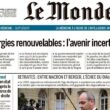In February, a star-studded consortium including former New York Times CEO Mark Thompson, ex FT editor-in-chief Lionel Barber, and ex Irish Independent boss Gavin O’Reilly, backed a £500k MBO of The New European (TNE) from the UK’s Archant regional news group, led by its founder Matt Kelly.
The weekly had been launched as a pro-EU “new pop-up paper for the 48%” who voted “remain” in the 2016 referendum by newspaper veteran Kelly. But Vice News described it as a newspaper for the “sore loser” that is “not united by a love for Europe, but rather a disdain for the 52%”.
It was intended, initially, to have a lifespan of just four issues, beyond which publication was to be reviewed week-by-week. By the third edition, the paper was at break-even and selling 40k. It then claimed to be profitable, though this was thought to be without charging overheads.
The magazine now has a paid print and digital circulation of some 18k (8k subscriptions, 10k newsstand) with a 3-year target to increase the total to 25-30k. Not that big for a big idea.
Kelly had been the first editor of TNE, before moving up to be publisher and then Chief Content Officer of Archant. He is now CEO of the new company.
Gavin O’Reilly, chairman of the new company, said: “Since the referendum, The New European has shown that there is a significant market for high-quality, informative, provocative and entertaining journalism written for an audience who care deeply about both Britain and Europe’s future. With new investment capital in place and seasoned media investors, we have a very clear vision of how we can better enhance the experience for our readers and employ new innovations and product developments.”
The most intriguing part of the project may be the way that Kelly put together the funding. He acquired the magazine from Archant’s new private equity owners for £467k, including liabilities. He then wrote to a list of industrialists, private equity investors and Barber, O’Reilly and Thompson, inviting subscriptions of between £25k and £100k, not even spelling out the shareholdings on offer. In the event, he raised £1m, had to scale back some investors, and has retained his own stake of almost 50%. All of the 15 people he approached agreed to invest, nobody declined.
The investment will fund losses for 2021 and also improved digital services. With a staff of seven, an extensive network of freelance contributors and production outsourced to Archant, it is thought that The New European will breakeven in 2022, especially if it succeeds in increasing its share of digital subscriptions priced at £96.
Whether or not the polarised views about the EU which encouraged the launch of The New European will morph into a larger, regular audience of Europhile British readers is anybody’s guess. But some of the investors don’t expect to see dividends and have been pleasantly surprised at how low-cost are printed magazines. In that sense, the magazine enters this new phase of its (and the UK’s) post-EU life with pretty low expectations. Even the circulation target of 30k – a fraction of that achieved by the New Statesman, Spectator, and The Oldie – implies that the shareholders are funding The New European more for fun and faith than investment. It is assumed that, over time, the UK readership could be augmented by a larger online readership worldwide. But the targets still seem pretty modest.
The New European is another reminder that all kinds of printed publications can be viable, especially as not-for-much-profit. They can be very low-cost trophy assets for successful people looking for the fun of being involved in something they like. The appeal of politics is obvious but so might be music, culture and the arts in which estimable publications frequently struggle to survive. There may be a new model here for independent publishers…




